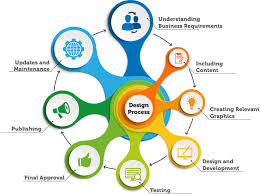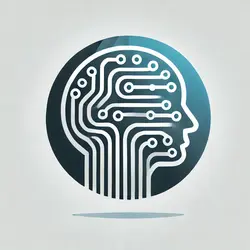
The Importance of Web Design & Development
In today’s digital age, having a strong online presence is crucial for businesses of all sizes. Web design and development play a significant role in creating websites that are not only visually appealing but also functional and user-friendly.
Web Design
Web design focuses on the aesthetics and layout of a website. It involves creating an engaging visual interface that reflects the brand identity and enhances the user experience. A well-designed website can capture the attention of visitors and keep them engaged.
Web Development
Web development, on the other hand, deals with the technical aspects of building a website. This includes coding, programming, and implementing features that make the website interactive and dynamic. Skilful web development ensures that the website functions smoothly across different devices and browsers.
The Intersection of Design & Development
Effective web design and development go hand in hand to create a successful website. A harmonious blend of creativity and technical expertise results in a website that not only looks great but also performs optimally. Collaboration between designers and developers is key to achieving this balance.
User Experience (UX) & Search Engine Optimization (SEO)
Good web design and development take into account factors such as user experience (UX) and search engine optimization (SEO). UX design focuses on making the website easy to navigate and intuitive for users, while SEO ensures that the site ranks well in search engine results, driving organic traffic.
Conclusion
Web design and development are essential components of creating a successful online presence. By investing in professional web design and development services, businesses can attract more visitors, generate leads, and ultimately achieve their online goals.
Five Key Benefits of Web Design and Development for Modern Businesses
- Enhances brand identity and credibility
- Improves user experience and engagement
- Boosts search engine visibility with SEO strategies
- Increases website functionality and interactivity
- Adaptable to different devices for a responsive design
Challenges in Web Design and Development: Navigating Costs, Time, and Technical Hurdles
- 1. Costly
- 2. Time-consuming
- 3. Technical challenges
- 4. Maintenance needs
- 5. Compatibility issues
- 6. Design limitations
Enhances brand identity and credibility
One of the key advantages of web design and development is that it enhances a company’s brand identity and credibility. A well-designed website that reflects the brand’s values and aesthetics helps to establish a strong and memorable online presence. Consistent branding across all web elements instils trust in visitors, showcasing professionalism and reliability. By investing in high-quality web design and development, businesses can effectively communicate their brand message, differentiate themselves from competitors, and build credibility with their target audience.
Improves user experience and engagement
One significant advantage of web design and development is its ability to enhance user experience and engagement. By creating visually appealing layouts, intuitive navigation, and interactive features, a well-designed website can captivate visitors and keep them engaged for longer periods. This improved user experience not only increases the likelihood of users exploring the site further but also encourages repeat visits, ultimately leading to higher levels of engagement and satisfaction. Effective web design and development play a crucial role in establishing a positive connection between the user and the website, resulting in a more enjoyable and rewarding online experience.
Boosts search engine visibility with SEO strategies
Web design and development offer the significant advantage of enhancing search engine visibility through effective SEO strategies. By incorporating SEO best practices during the development process, websites can improve their rankings on search engine results pages. This increased visibility not only drives more organic traffic to the site but also helps in reaching a wider audience and attracting potential customers who are actively searching for relevant products or services.
Increases website functionality and interactivity
One significant advantage of web design and development is the enhancement of website functionality and interactivity. Through skilful coding and implementation of features, web developers can create websites that not only look visually appealing but also offer a seamless user experience. By incorporating interactive elements such as animations, forms, sliders, and other dynamic components, users are engaged and encouraged to explore the website further. This increased functionality and interactivity not only improve user satisfaction but also contribute to higher levels of user engagement and conversion rates.
Adaptable to different devices for a responsive design
One of the key benefits of web design and development is the ability to create websites that are adaptable to different devices, ensuring a responsive design. This means that a website can seamlessly adjust its layout and content to provide an optimal viewing experience on various screen sizes, from desktop computers to smartphones and tablets. By incorporating responsive design techniques, businesses can reach a wider audience and deliver consistent functionality and aesthetics across all devices, enhancing user satisfaction and engagement.
1. Costly
Professional web design and development services can be a significant financial investment, posing a challenge for small businesses or startups with limited budgets. The costs associated with hiring skilled professionals, purchasing necessary tools and technologies, and maintaining a high-quality website can be prohibitive for those operating on a shoestring budget. This financial barrier may deter some businesses from accessing the benefits of professional web design and development, potentially limiting their online presence and competitiveness in the digital landscape.
2. Time-consuming
One significant drawback of web design and development is the time-consuming nature of creating a custom website from scratch. Building a website tailored to specific requirements demands considerable time and effort, potentially causing delays in launching the site. The intricate process of designing and developing each element of the website, from layout to functionality, can contribute to extended timelines before the site is ready for public access. This time constraint may pose challenges for businesses seeking a quick online presence or those with urgent digital marketing needs.
3. Technical challenges
One significant drawback of web design and development is the presence of technical challenges. The intricate nature of web development tasks, which involve intricate coding and programming, can give rise to potential technical issues that demand thorough troubleshooting. Resolving these challenges requires a deep understanding of programming languages and web technologies, making it a time-consuming and sometimes frustrating aspect of the web design and development process.
4. Maintenance needs
One significant drawback of web design and development is the ongoing maintenance requirements. Websites demand consistent updates and maintenance to uphold their security measures and stay current with evolving technologies. Neglecting regular maintenance can leave websites vulnerable to security breaches and hinder their performance, making it essential for businesses to allocate resources towards ensuring the continuous upkeep of their online presence.
5. Compatibility issues
One significant drawback of web design and development is the issue of compatibility. Ensuring that a website operates seamlessly across various devices, browsers, and screen sizes can present a considerable challenge. Designing and developing a website that delivers a consistent user experience regardless of the platform used requires meticulous attention to detail and thorough testing procedures. Compatibility issues can lead to functionality errors, layout distortions, and ultimately impact the overall user satisfaction and engagement with the site. Addressing these compatibility challenges demands expertise and resources to ensure optimal performance across diverse digital environments.
6. Design limitations
Design limitations can pose a significant challenge in web design and development. Technical constraints and compatibility requirements can restrict the creative freedom of designers, making it difficult to implement certain design choices. This limitation may result in compromises that impact the overall aesthetic appeal and user experience of a website. Finding a balance between creative vision and technical feasibility is crucial to overcoming design limitations and delivering a successful web project that meets both visual and functional requirements.
